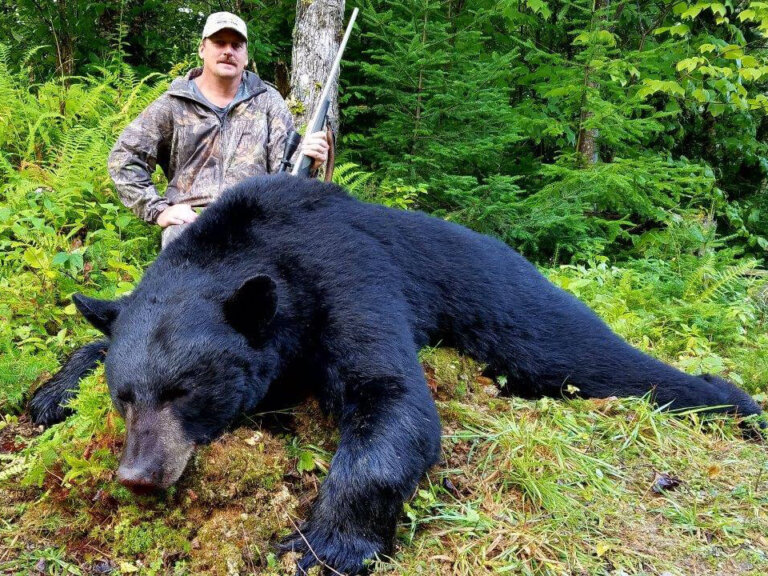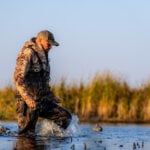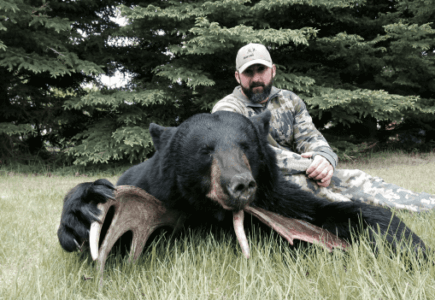During the first part of every new year, WTA headquarters gets hit with a perfect storm. Two powerful forces converge to light up our phone lines and deluge us with a tidal wave of requests for assistance in selecting and booking hunting and fishing trips. The two powerful forces? One is our annual WTA trips-of-a-lifetime and TAGS catalogs landing in homes, and the other is the outdoor trade shows going full swing. Both spark a lot of interest and remind our loyal clients, and a whole lot of new customers, that it is time to plan for upcoming seasons. The far-thinking ones look into the following year and deeper down their bucket lists. I should also add, it’s a great time of year—our offices are buzzing and everyone is talking about our favorite subjects: hunting and fishing trips.
With the pandemic in the rearview mirror, people are more ready than ever to get back at it, so availability at our hand-picked locations is filling up faster than ever. That’s not me trying to pressure you into calling. It’s me giving you good advice. Don’t wait too long to call.
This time of year, I have bear hunting on my mind, so here are a few of my favorites to get you thinking about it, too.
Central British Columbia Black Bear Hunts
Many consider British Columbia to be the mecca of spot-and-stalk hunting for trophy black bears. And this particular hunt is located in the heart of central BC, and is home to a thriving population of mature black bears. Not only can you harvest two bears, but the trophy quality is excellent. This spot-and-stalk hunt can be conducted with a bow or rifle. You will be hunting primarily logging blocks and agriculture fields in a huge hunting area encompassing 2,200 square miles of prime habitat. Lodging is comfortable, consisting of a common area for meals and mingling, and bunk houses with beds and wood stoves for the clients. This hunt can be conducted 1×1 or 2×1 guided and boasts a 95% success rate, with 100% shot opportunities.
Maine Black Bear Hunting
This is a great traditional northern Maine black bear hunt held in the fall, when everyone wants to visit the Northeast. And that is exactly why this is the perfect option for trophy bear hunters who also have a companion (or whole family) who would like to experience Maine in the fall. The baited hunts begin in late August and run through mid-September. You’ll stay in comfortable log cabins equipped with gas lights and heat, and a private bath. Fine cuisine, featuring Maine lobster, prime meats, and much more, is served in the historic dining room. These are high-quality black bear hunts, reasonably priced and ideally located.
Boat-Based Alaska Black Bear Hunt on Kuiu Island
And when we say boat, we mean a state-of-the-art 70+-foot yacht which serves as your home as you hunt big black bears in southeast Alaska. Kuiu Island is home to one of the highest populations of black bears in the state, and the trophy quality is second to none. Most bears harvested will score at around 7 feet with 19-inch-plus skulls, with real opportunity for a Boone and Crockett skull. This 7-day adventure is much more than a hunt, it’s an opportunity to experience the natural beauty of Alaska in comfort. Four comfortable staterooms, each with a private bath, will be your home away from home for the week. Plus with a maximum of just 2–4 hunters at a time, it’s a great opportunity for a private hunt for a parent/child or a small group of friends. Your days are spent glassing the coastline and cruising the shoreline and creeks by skiff with your guide. When you spot a bear, typically found feeding on the fresh green sedge and crustaceans along the beaches, your heart rate goes up and the adventure really begins.
Idaho Black Bear Hunt – 5-Star Lodge
Located along the protein-rich Salmon River in the pristine north-central Idaho backcountry, this outfit has a backdrop worthy of a thousand photos. This specific area of Idaho is known for the wild fruit trees that fill virtually every canyon on the ranch. Guess where bears gravitate to from the surrounding mountains as they prepare for winter! You guessed it. With a high-density bear population and outstanding trophy quality, this is a hunt that can be customized to fit anyone’s preference of pursuit whether it’s hunting over bait, with hounds, or spot-and-stalk hunting.
Remember, this is a busy time of year. Don’t wait too long to call. Give one of our consultants a call today and we’ll talk about these high-success black bear hunting opportunities, or any other hunting adventure you have in mind. Call us at 1-800-346-8747.
















